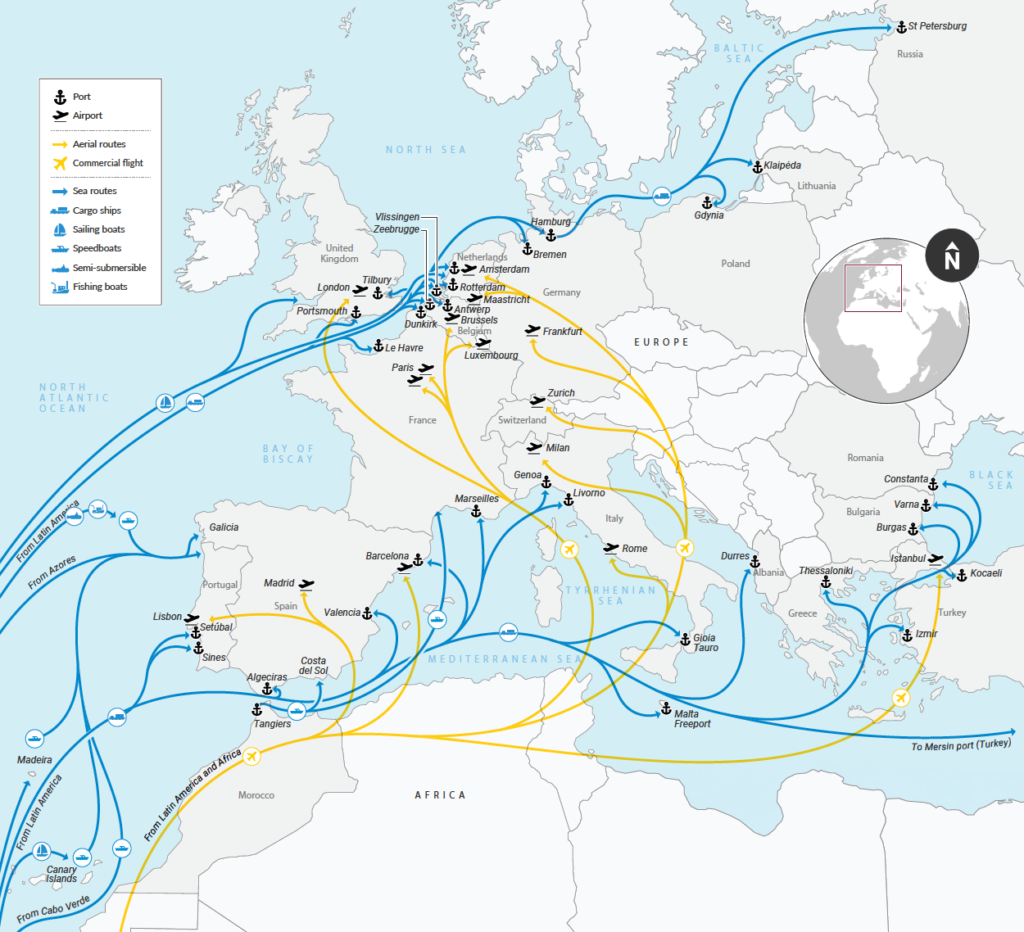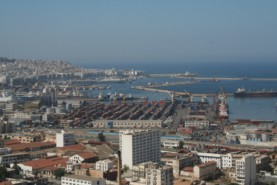Event Details
Where
Virual event - Zoom
We will be hosting a webinar to discuss key findings of the report with the lead author, Jeremy McDermott, Executive Director and co-founder of InSight Crime. Speakers will also include:
Laurent Laniel, Principal scientific analyst, European Monitoring Centre for Drugs and Drug Addiction (EMCDDA)
Fatjona Mejdini, Senior Analyst, GI-TOC
James Bargent, co-author of the report, Project Manager, InsightCrime
The webinar will be chaired by Virginia Comolli, Research Manager, GI-TOC
***The full webinar will soon be available in both English and Spanish***
Posted on 09 Feb 2021
This report has been jointly produced by InSight Crime and the Global Initiative Against Transnational Organized crime. This report is the product of field investigations over two years in more than 10 countries in Latin America, the Caribbean and Europe, as well as interviews with officials, investigators and experts in numerous countries across both continents, and the collection and analysis of open source data and reporting.
click here to access the Spanish version (InsightCrime.org)
Over the past few years, the cocaine trade has enjoyed an unprecedented boom, fuelled by soaring production. In 2018, the combined production for Colombia, Bolivia and Peru – the three main producers of cocaine – was more than double that of 2013. While the rate of growth has slowed of late, there is still no sign of it hitting a peak.
Coverage of this phenomenon has largely focused on the United States and its seemingly endless ‘war on drugs’. However, smarter traffickers have long preferred Europe, which has far more potential for growth than the more saturated US market, and higher profits. Cocaine to Europe has increased over the years, to the point where it is now beginning to rival that entering the US mainland.
‘For 2019 and the first months of 2020, the thinking was that the flow of drugs entering or passing through Europe was between 500 and 800 tonnes. We base these numbers in part on the notion that we are seizing 10% to 20% of the total,’
said one senior European police official and cocaine expert, who was not authorized to speak on the record.
A significant percentage of that flow is in transit to other parts of the world. Traffickers are pushing eastwards from the more established markets in western Europe towards Russia and Asia – and feeding every country in between.

From a business perspective, trafficking cocaine to Europe is a far more attractive prospect than targeting the US. Prices are significantly higher and the risks of interdiction, extradition and seizure of assets significantly lower. A kilogram of cocaine in the US is worth up to US$28 000 wholesale. That same kilogram is worth around US$40 000 on average and as much as nearly US$80 000 in different parts of Europe.
From the perspective of the authorities, the future of cocaine trafficking to Europe holds many dangers. While European and Latin American governments struggle to contain the pandemic and associated economic carnage, organized crime sees new opportunities.
The cocaine trade is now populated by a variety of different types of criminal syndicates, which are made up of many different and mixed nationalities. There are no longer criminal structures like the Medellín Cartel, which controlled cocaine production in Colombia and sold their drugs on the streets of Miami and New York. Criminal networks today rely on subcontracting out much of the work to different transport specialists, assassins for hire, corruption nodes and money launderers, as well as legal actors such as lawyers, accountants and bankers. Different criminal nodes will align for a particular shipment, then drift apart, searching for new opportunities and trafficking constellations.




